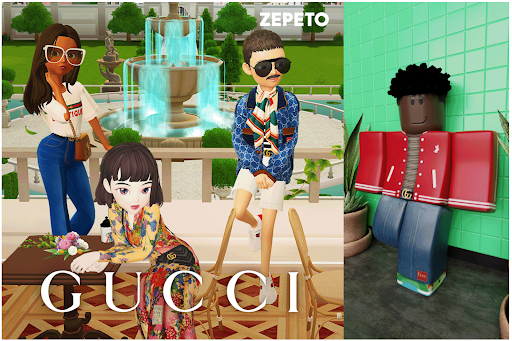If it has been a while, you indulged in the little pleasures like reading a book, from cover to cover, not just skimming through, you are not alone. Life is busier than ever. Our to-do lists are overflowing, and everything (phones, smartwatches, smart homes, alerts, social feeds) is competing for our attention. And guess what? Most of us are losing that battle.
In fact, with 227 million Americans regularly playing video games, it is clear that our brains are more tuned into quick engagement and interactive content than passive reading or traditional media. We simply cannot focus the way we used to, and this shift is not just personal — it is changing how we design the digital world.
As business leaders, creators, and builders of the future, this is not a problem to avoid, it is an opportunity to embrace.
The average gamer plays over 8 hours a week. If you have ever seen someone locked into a video game, completely unaware of time passing, you have seen the power of true engagement.
Why does this happen?
Because games tap into our natural urge to compete, grow, and achieve. Whether it is setting new records or leveling up a character, games trigger something deep and human and that is exactly the energy we need to bring to modern apps, platforms, and especially Web3. These Web3 gamification strategies aim to capture that same energy — blending the fun of gaming with the transformative potential of decentralized technology.
What is Web3, Anyway?
Web3 is the next chapter of the internet. It is all about giving people more control and ownership through tools like blockchain, NFTs, tokens, and decentralized apps (dApps).
But here is the big question:
How do we get people to actually use, understand, and enjoy all this new technology?
The answer?
Gamification in web3 and design thinking.
Gamification is when apps or websites borrow fun parts of games like points, levels, and rewards to keep users engaged. Think of earning badges on Duolingo or hitting fitness goals on your smartwatch. That is gamification at work.
But in Web3, it gets even more interesting. You are not just earning digital stickers, you are getting real rewards. By joining challenges on a decentralized app (dApp), you might earn cryptocurrency, unique non fungible tokens (NFTs), or even a say in how the platform is run. In this new version of the internet, your time and effort do not just feel good, they can actually pay off.
When design thinking is added to the mix, it means creating with real people in mind like asking what users need, what confuses them, and what would make an experience delightful, not difficult.
When gamification and design thinking are used together, they turn even complex systems like Web3 into something intuitive, inviting, and addictive (in a good way).
Web3 Gamification: How It Drives Real User Engagement
Instead of making Web3 feel like a tech maze, gamification helps turn it into a journey. A journey full of milestones, stories, and progress.
Here is how:
- Progress Tracking: Users can see how far they have come and what is next (like levels in a game).
- Real Rewards: Earn tokens, NFTs, or digital items that have real value.
- Personalized Experiences: Smart design makes it feel like the app knows you.
- Storytelling: Users feel like they are part of something bigger: a quest, not a chore.
- Community & Competition: Leaderboards, teams, and social goals add excitement and purpose.
But there is more…
Most “gamification” stops at badges and leaderboards, but true engagement goes deeper. Video games create whole worlds, full of character development, exploration, and emotional connection.
Want real loyalty and passion? Give users a digital version of themselves — an avatar that grows with them, learns with them, and represents their progress.
This type of design is not just about keeping users online. It is about making them feel something. It is empowerment, not manipulation.
Real-World Examples from Web3
Some projects are already putting this into action:
StepN

StepN turns your steps into tokens. Walk, jog, or run — and earn while you move. It’s a clear example of gamified decentralized apps delivering real-world value.
Gucci

Gucci is mixing fashion with gaming by making cool digital clothes and virtual sneakers for apps like Roblox and Pokemon Go. They’re using fun, interactive experiences to connect with younger, tech-loving fans — a luxury brand using Web3 gamification strategies to stay relevant.
Nikeland

Nike created NIKELAND,, a fun virtual world where people can play sports like basketball and soccer. Winners earn tokens they can trade for digital Nike gear, making it a cool way to mix gaming with fitness and fashion. It’s a form of gamification in Web3 designed to blend brand engagement and play.
These platforms do not just use Web3 tech. They make people want to explore it, thanks to design thinking for Web3 User Experience (UX) and smart gamification principles.
Caution: Not All Gamification is Good
Throwing points and badges at users without thought? That is not real gamification — that is noise. If it feels like a trick or distraction, people will tune out fast.
That is why design thinking matters. It ensures gamification fits the experience, respects the user, and makes sense for the long term.
Why Gamification and Design Thinking Matter for Web3 Success
We do not need more apps that feel like homework. We need experiences that people look forward to, one that keeps them curious, engaged, and inspired.
Web3 is powerful. But power alone does not win hearts. Fun, value, clarity, and meaning do.
So let us build Web3 like we would build a great game:
With purpose. With creativity. And always, with the user at the center.
Because when tech feels like a game worth playing…
Everyone wins

